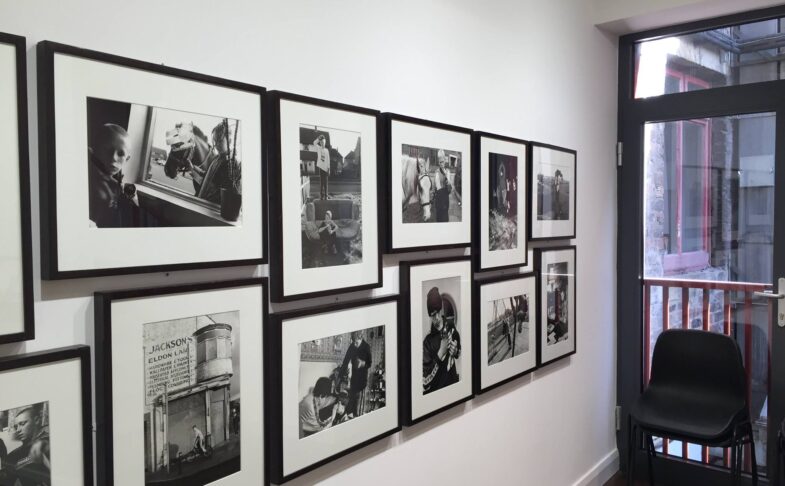Pioneering documentary photography gallery, which has hosted the likes of Chris Killip, Tish Murtha and Mik Critchlow during its 46-year history, faces permanent closure without public support
Newcastle’s Side Gallery has announced it will close on 09 April, citing “critical funding cuts and the cost-of-living crisis”. Unless additional funding is secured, the gallery will close permanently after 46 years in operation, it announced on 04 April. A Crowdfunder with a target of £60,000 is now active, with the aim of reopening the space to the public in September 2024.
Located on Newcastle’s Quayside, Side Gallery has promoted and hosted documentary photography and film for over four decades. Set up by the Amber Film & Photography Collective in 1977, Side’s mission is to be “an agent for change through the commission, exhibition and preservation of world-class visual stories that highlight social concerns and celebrate diverse lives and landscapes across the North East, UK and the globe”. The gallery lost its National Portfolio funding – awarded to nearly a thousand arts and cultural organisations by the Arts Council England – in November 2022.
The gallery has been exhibiting photography since the 70s through group shows, commissions and single-artist surveys. Born in a converted alleyway in the then-neglected Quayside region, the gallery was shaped by the likes of Ian Macdonald, Tish Murtha, Markéta Luskačová, Izabela Jedrzejczyk and John Davies. Early exhibitions in the 1970s and 80s included Northern View, featuring Daniel Meadows, Nick Hedges, Derek Smith, Ken Baird and AL Coburn; Tish Murtha’s Juvenile Jazz Bands; a Diane Arbus survey in 1981; and Wendy Ewald’s Portraits & Dreams in 1986.
Side and the Amber Collective have played a significant role in documentary photography of the post-industrialised north of England. The gallery was co-founded by Chris Killip, who served as its director for two years and exhibited extensively at Side, including his Seacoal, Isle of Man, and Askam and Skinningrove series. The gallery’s deep community ties allowed photographers like Mik Critchlow to make work locally with the knowledge it would be displayed sensitively and accessibly.
The gallery briefly closed in 1991 after a dispute with Northern Arts (now part of Arts Council England), who had reduced Side’s funding from £120,000 to £25,000 two years prior. According to Side, the disagreement centred on Northern Arts’ desire for Side to become “a generalist photography gallery and Amber’s interest in developing community-based photographer-activists”. The space reopened in 1992 as an augmented touring venue, allowing exhibitions including Graciela Iturbide’s Juchitán, Mik Critchlow’s Seafarers, and Eugene Richards’ Below the Line to tour venues across Northumberland and County Durham.
The touring policy ended in 1996 when Side focused on on-site exhibitions drawing on its own collections. Into the 2000s, the gallery continued to commission projects focusing on the post-industrialised north-east, including the Coalfield Stories series – featuring works by Martin Figura and Graeme Rigby – while also hosting exhibitions of photography responding to global events. Chris Steele-Perkins’ Notes from Afghanistan was displayed in 2000, with Simon Norfolk’s Afghanistan: Chronotopia following two years later. Heidi Bradner’s A Decade of War in Chechnya arrived in 2005, with exhibitions on Bangladesh’s independence, The Caucasus and photography in the GDR also following.
Recent exhibitions at Side include Big Heart, Strong Hands, Anne Helene Gjelstad’s photo essay depicting women’s lives on the Estonian islands of Kihnu and Manija, and A Wounded Landscape, photographs from Marc Wilson’s six-year journey across 20 countries documenting the aftermath of the Holocaust.

